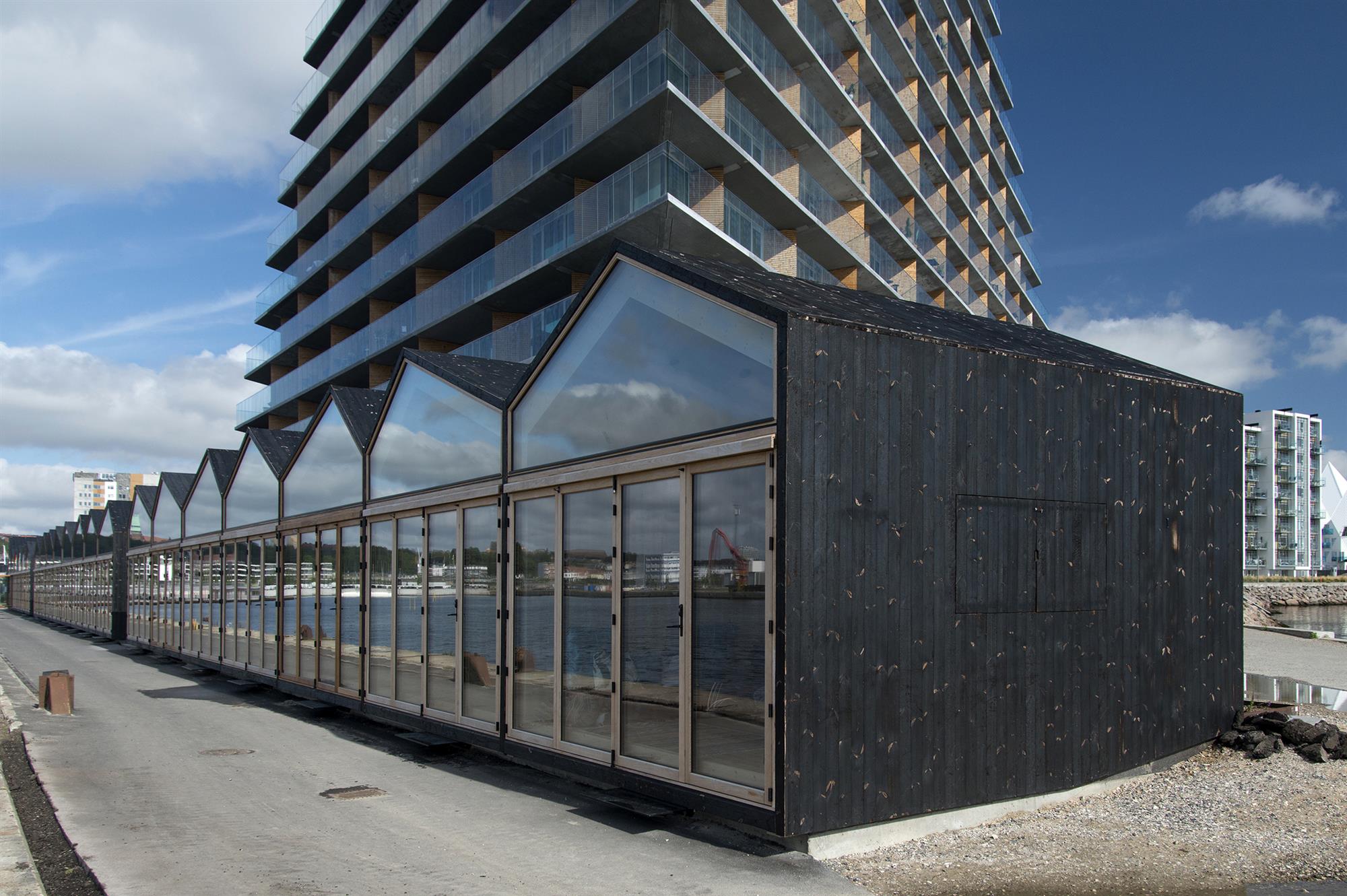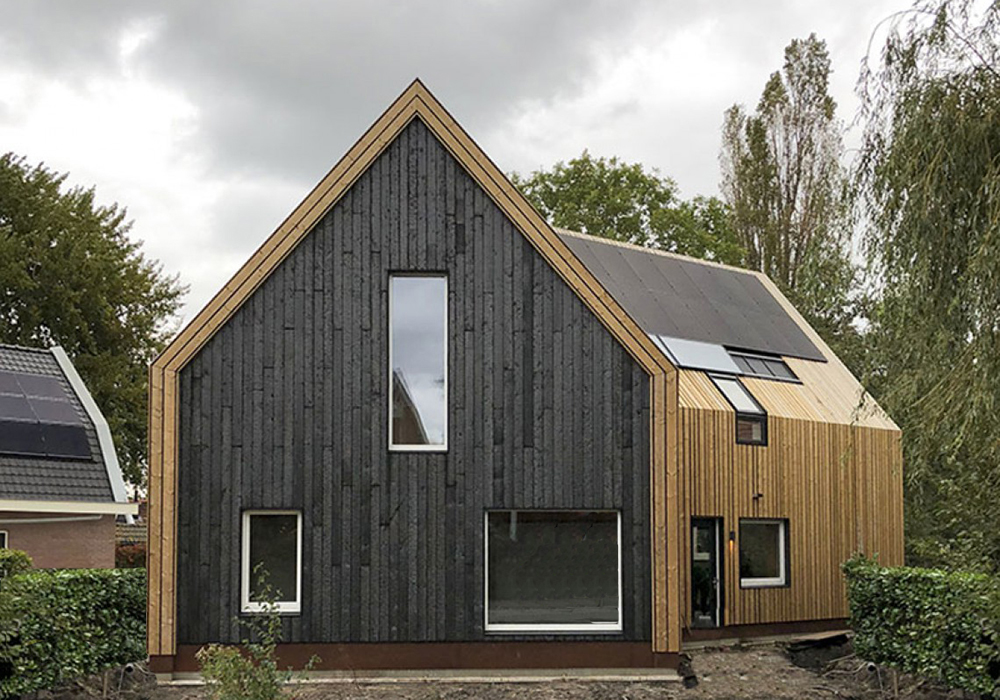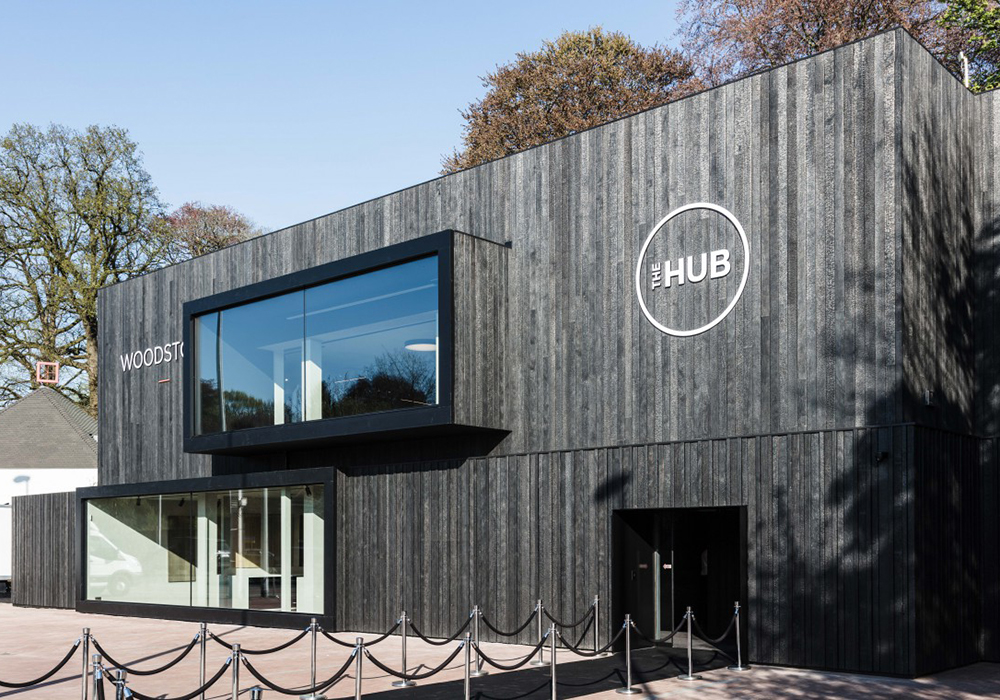Frøslev Flamewood

Flamewood - also known as the Shou Sugi Ban technique - is wood whose surface is burned to a greater or lesser extent. Originally, this process originates from Japan and is a very old technique for protecting and preserving wood. The process results in a very unique look with a very vibrant surface in which colours change from deep black to shiny silver.
Frøslev Flamewood – powered by Zwarthout
Frøslev Flamewood is provided in collaboration with Zwarthout - the best wood from Frøslev combined with beautiful fire treatments from Zwarthout.
Depending on how long the wood is carbonised and the type of wood, the surface will look different. Whether you like the completely carbonised and slightly porous surface or the burnt and crackled surface is a matter of taste and depends a lot on the nature of the project and the requested final look.
Frøslev offers the following products which vary in wood type, surface structure and fire treatment. Each profile is unique in every variant, and two boards will never be the same.
Find your favourite for the next construction project.
Frøslev Flamewood - Naoshima

Architect and photo: ORGA architect; Contractor: Bouwbedrijf Van Engen
Naoshima is treated Douglas fir. The colour is deep black, and the surface of the wood is porous in the outermost mm of the surface following the fire treatment. The structure is irregular with a sparkle that works well for vertical as well as horizontal assemblies.
The brittle carbon layer requires structural protection to reduce the impact of the elements. We recommend not using this type for buildings above 6 m above ground level or in open areas with high wind exposure.
The carbon layer may leave stains which can easily be washed off with soap and water. Carbon layers age over time, and a beautiful patina develops.
Naoshima is made of Douglas fir from sustainable and certified, European forestry. There may be knots in the wood that are visible through the fire-treated layer. Naoshima are delivered without surface treatment, and the surface may leave stains in the beginning. However, this will diminish as the wood is exposed to the elements.
Frøslev Flamewood - Kazura

Photo: Zwarthout / The HUB
The silvery surface has a crackled and varied pattern. The fire-treated surface is significantly more solid and weather-resistant than Naoshima.
The hard carbon layer makes Kazura ideal as a durable, outdoor finish on the façade but is also very suitable for indoor use.
Kazura is made of Radiata Pine - a fast-growing pine species originating from certified plantations in New Zealand.
Kazura is delivered without surface treatment, and the surface may leave stains to a slight degree in the beginning. However, this will decrease over time as the wood is exposed to the elements.
Production
The process behind producing Frøslev Flamewood is quite simple. The surface of the wood is burned under controlled conditions to a greater or lesser extent - depending on the requested look. This results in a charred and quite unique profile that can be used on façades and other external cladding. The wood is burned on one surface and on the two edges.
Once the surface of the wood has been carbonised, it is cooled with water and cleaned.
The process preserves the tree and makes it unnecessary to impregnate the tree using other methods. In order to obtain various looks, the time during which the wood is burned can be varied as well as the type of wood being burned.
The process of burning the wood surface causes the sugary substances to break down. This prevents attacks of rot, insects and fungi, and the wood is protected against the elements in a highly sustainable way without the use of any chemical treatment.
Maintenance
Outdoor use
Wooden façades are subject to considerable wear and tear. Rain, hail and UV radiation all contribute to surface degradation. Structural protection in the form of eaves etc. can significantly extend the life of the surface. Façades that are exposed to much sun need more frequent maintenance than façades in the shade. Flamewood surfaces that are completely burnt/carbonised require less maintenance than slightly burnt surfaces. Naoshima and Kazura both have completely carbonised surfaces.
In principle, these products do not require any maintenance. If necessary, moss growth can be cleaned off by means of a natural vinegar solution. Use a sprayer for this or use a garden sprayer for large surfaces. Do not use a high-pressure cleaner as this may damage the carbonised surface. Do not use abrasives, and no not scrub the surface.
Over the years, the wood begins to show small patches of peeling. This is normal and is part of the special characteristics of the product. In Japan, this is called 'Wabi-Sabi' - the aesthetics of being transient and imperfect. These patches turn grey on their own.
In case of extensive damage, we recommend replacing the entire board.
Indoor use
If Frøslev Flamewood is treated correctly, it will retain its beauty for years. In principle, indoor cladding with a carbonised layer requires no maintenance. If the surface is only slightly burnt, it may fade over time if exposed to very direct sunlight. The deep, carbonised surfaces are less exposed. Marugame has a completely carbonised surface and can be used indoors.
The product requires no maintenance. Dust it off gently with a feather duster or a slightly dampened, lint-free cloth. Do not use abrasives, and no not scrub the surface. If there is any damage, do not try to fix it on your own by burning it.
We advise against trying to hide damage with black paint - this will not produce a good result. The shine and shade of the paint will never match the same look as the silvery, carbonized layer.
In case of extensive damage, we recommend replacing the entire board.